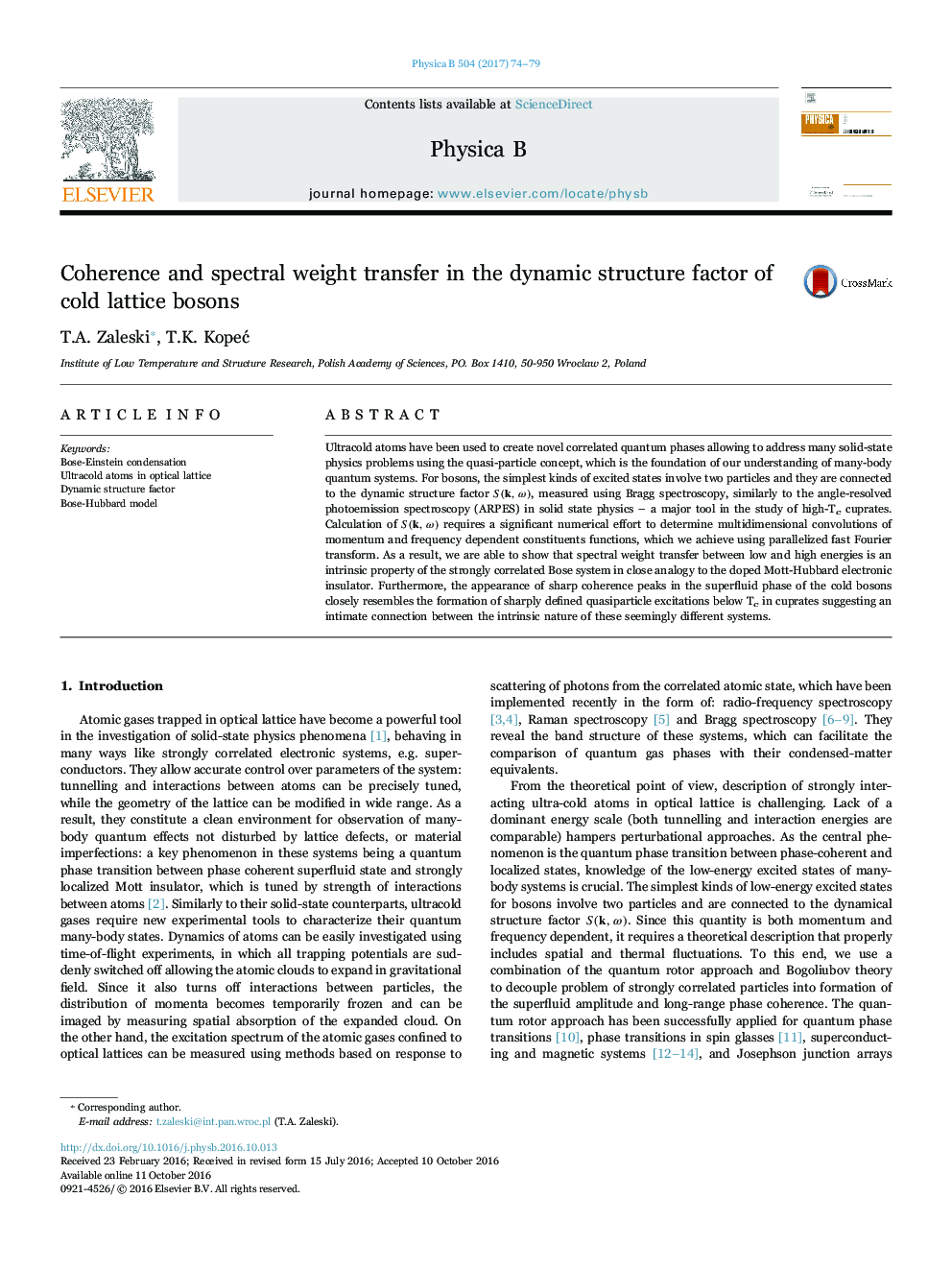| Article ID | Journal | Published Year | Pages | File Type |
|---|---|---|---|---|
| 5491990 | Physica B: Condensed Matter | 2017 | 6 Pages |
Abstract
Ultracold atoms have been used to create novel correlated quantum phases allowing to address many solid-state physics problems using the quasi-particle concept, which is the foundation of our understanding of many-body quantum systems. For bosons, the simplest kinds of excited states involve two particles and they are connected to the dynamic structure factor S(k,Ï), measured using Bragg spectroscopy, similarly to the angle-resolved photoemission spectroscopy (ARPES) in solid state physics - a major tool in the study of high-Tc cuprates. Calculation of S(k,Ï) requires a significant numerical effort to determine multidimensional convolutions of momentum and frequency dependent constituents functions, which we achieve using parallelized fast Fourier transform. As a result, we are able to show that spectral weight transfer between low and high energies is an intrinsic property of the strongly correlated Bose system in close analogy to the doped Mott-Hubbard electronic insulator. Furthermore, the appearance of sharp coherence peaks in the superfluid phase of the cold bosons closely resembles the formation of sharply defined quasiparticle excitations below Tc in cuprates suggesting an intimate connection between the intrinsic nature of these seemingly different systems.
Related Topics
Physical Sciences and Engineering
Physics and Astronomy
Condensed Matter Physics
Authors
T.A. Zaleski, T.K. KopeÄ,
